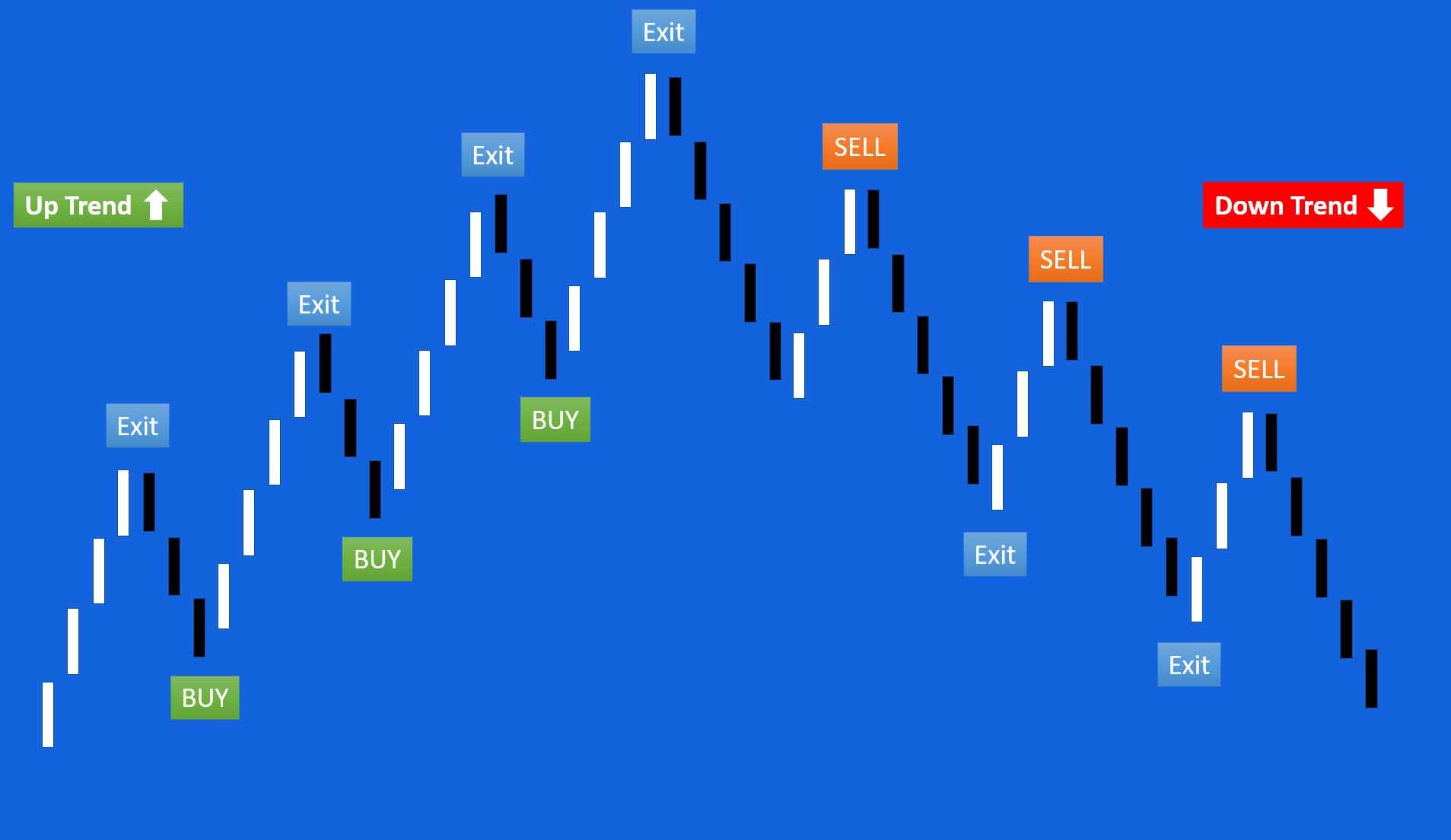What is Swing Trading?
Swing Trade is an investment strategy used in financial markets. This strategy typically targets short to medium-term time frames ranging from a few days to several weeks, aiming to benefit from price fluctuations. Swing traders can operate with different financial instruments such as stocks, options, futures, and foreign exchange markets.
The primary goal of this strategy is to generate profit by analyzing market trends and price movements. Swing traders use methods of technical analysis and fundamental analysis to identify market trends and potential entry-exit points. While technical analysis examines price charts and various indicators, fundamental analysis evaluates factors such as a company’s financial condition, industry trends, and economic indicators.
Swing trading exhibits a longer-term approach than day trading (day trading) and usually requires less time and attention. However, this strategy also requires consideration of market risks and volatility. Swing traders attempt to limit potential losses by using stop-loss orders and risk management techniques. This strategy is suitable for investors who want to closely follow market movements but are not interested in day trading.
What Defines a Swing Trader?
A swing trader is an investor type in the financial markets who aims to benefit from short to medium-term price fluctuations. This strategy is typically applied over time frames ranging from a few days to several weeks. Swing traders aim to profit from short-term price movements by trading various financial instruments like stocks, currencies, options, and futures.
Swing traders heavily utilize technical analysis methods to identify market trends and turning points. They analyze data such as charts, technical indicators, and price movements to predict the future direction of the market. They may also consider companies’ financial statuses, industry trends, and macroeconomic data through fundamental analysis methods. These analyses play a crucial role in making buying or selling decisions and determining potential entry-exit points.
Swing trade is positioned between day trading (day trading) and long-term investment strategies. This method can be less intensive than day trading, which requires constant market monitoring, and thus suitable for full-time workers or investors who cannot continuously watch the markets. However, swing traders must be cautious against market volatility and sudden price changes, and implement an effective risk management strategy. Stop-loss orders and portfolio diversification are among the essential elements of this strategy.
What is Swing Analysis?
Swing analysis is a type of analysis aimed at examining and benefiting from short to medium-term price movements in financial markets. This analysis is particularly used in the swing trading strategy. Here is a detailed explanation and methods on how swing analysis is conducted:
Trend Analysis
- Trend Identification: Price charts are examined to identify rising, falling, and horizontal trends.
- Support and Resistance Levels: The probability of a turnaround when the price reaches these levels is high.
- Trend Lines and Channels: Rising or falling trend lines and the channels formed between these lines indicate potential buying and selling points.
Technical Indicators and Oscillators
- Moving Averages: Indicate the general direction of the price and are used to determine the strength of the trend.
- MACD (Moving Average Convergence Divergence): Provides information about the strength, direction, and momentum of the trend.
- RSI (Relative Strength Index): Helps to identify overbought or oversold conditions.
- Stochastic Oscillator: Also used to identify overbought and oversold areas.
- Bollinger Bands: Show the volatility of the price and possible trend changes.
Price Action Analysis
- Candlestick Chart Formations: Formations like doji, hammer, engulfing can give reversal signals.
- Chart Formations: Triangles, flags, head and shoulders, and other formations are used to predict future price movements.
Integration of Fundamental Analysis
- Company News: Particularly in stock trading, company news can affect price movements.
- Economic Calendar: Macroeconomic data such as interest rates, unemployment rates can impact markets.
- Sector Analysis: The general condition and trends of the sector can affect the movement of related stocks.
Risk Management
- Stop-Loss Orders: Important for limiting potential losses.
- Position Size Management: Used to spread risk and avoid overexposure.
Psychological Factors
- Discipline: Sticking to your plan and avoiding emotional decisions is important.
- Patience: Waiting for the right entry and exit points may be necessary.
Swing analysis is conducted using a combination of these methods. Each trader should select tools suitable for their strategy and risk tolerance. This analysis process requires continuous learning, trial and error, and adaptation to market conditions.
Advantages of Swing Trading
Swing trade is a trading strategy used in financial markets, involving transactions over short to medium-term time intervals. It usually spans a few days to several weeks. This strategy has several key advantages.
Firstly, swing trade offers investors the opportunity to benefit from market trends. This strategy often aims to make a quick profit by following market fluctuations and trends. For example, if an investor anticipates an increase in the price of a stock, they can buy at a lower price and sell when the price rises, thereby making a profit. This approach is highly effective for investors who can accurately predict the general direction of the market. Additionally, swing trade provides time flexibility to investors. Compared to traditional day trading, swing traders do not have to constantly monitor market screens. This means less continuous tracking and analysis are required for trading. For instance, a full-time employee can analyze the market outside of working hours and execute trades when deemed appropriate. This makes swing trading appealing, especially for those with full-time jobs but still wanting to take advantage of market opportunities.
Another advantage is that swing trade offers benefits in terms of risk management. By holding positions for several days or weeks, investors can avoid short-term market noise and excessive volatility. Moreover, using risk management tools like stop-loss orders, they can limit potential losses. For example, an investor might set a 5% stop-loss for a particular stock. This means if the stock price falls 5% below the purchase price, it will automatically be sold, thus preventing larger losses.
When done correctly, swing trade can provide investors with many advantages, including flexibility in the market, time management, and effective risk control. However, like any trading strategy, swing trade requires market knowledge and careful planning. It’s important for investors to understand market trends and risk management techniques.
Disadvantages of Swing Trading
Although swing trade is a popular investment strategy in financial markets, it also comes with some disadvantages. Understanding these can help investors make more informed decisions when implementing this strategy.
Swing trading is sensitive to market changes. This strategy often relies on short-term market trends, which need to be accurately predicted. However, market conditions can change rapidly due to unexpected events and news. For example, an investor might have invested in a company’s stock expecting a price increase, but if negative news about the company is published, the stock price can unexpectedly drop. This situation can lead to losses instead of the expected profits for swing traders.
Swing trade has challenges with timing. This strategy requires accurate timing of market entry and exit points. It is critical for investors to make the right decisions about when to enter and exit the market. For instance, if an investor buys near the peak of the market and prices immediately start to fall, this can lead to significant losses. Similarly, selling too early can mean missing out on potential further profits. These timing challenges can pose a significant risk to swing traders, especially during periods of intense market fluctuations.
In conclusion, the disadvantages of swing trading include high sensitivity to market changes and challenges with timing. These disadvantages are important factors that investors need to consider when applying this strategy and always require careful market analysis and risk management. The information presented in this article is for general informational purposes and does not constitute investment advice. Readers are advised to conduct their own research and consult a professional financial advisor before making financial decisions.
You may be interested in: “What are Triangle Chart Patterns?“









